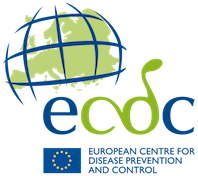ECDC strategic framework for the integration of molecular and genomic typing into European surveillance and multi-country outbreak investigations
This strategic framework document presents a proposed list of priority pathogens/diseases and outlines technical implementation options for the medium-term integration (2019–2021) of molecular/genomic typing information into EU-level surveillance and multi-country outbreak investigations.
Executive Summary
This report summarises the progress made in the areas of EU-wide enhanced molecular typing for disease surveillance, genomic surveillance, and multi-country outbreak support. It also documents how Member States use Whole Genome Sequencing (WGS) in public health operations and reviews the current evidence for the effectiveness of WGS.
The proposed strategic framework sets out a revised list of priority pathogens/diseases for medium-term integration in 2019–2021. Over this period, ECDC proposes to prepare for and/or implement support to multi-country outbreak investigations, continuous EU surveillance, and sentinel surveillance. Depending on preparedness for reporting of high-quality sequence data, the following applications and pathogens are particularly relevant:
- Support to multi-country outbreak investigations through sequence-based typing: Campylobacter spp., Clostridium difficile, hepatitis A virus, Legionella spp., Listeria monocytogenes, multidrug-resistant Mycobacterium tuberculosis (MDR TB), Neisseria meningitidis, Salmonella enterica, Shiga-toxin producing E. coli, West Nile virus and emerging multi- or extensively drug-resistant (MDR or XDR) bacteria, new pathogens or new modes of transmission of healthcare-associated or community pathogens.
- EU-wide sequence-based continuous surveillance: influenza virus, Listeria monocytogenes, MDR TB, Neisseria meningitidis, Salmonella enterica and Shiga-toxin producing E. coli.
- Sentinel surveillance or surveys: antibiotic-resistant Neisseria gonorrhoeae, Bordetella pertussis, carbapenem- or colistin-resistant Enterobacteriaceae, carbapenem-resistant Acinetobacter baumannii, HIV-transmitted drug resistance, and Streptococcus pneumoniae.
The report further outlines the technological steps that are necessary to develop an integrated analytical framework and operational platform that combine sequence-based typing data with epidemiological data at the European level.
The strategic framework was revised following comments from National Focal Points for Microbiology and Surveillance (October 2018) and the ECDC Advisory Forum (February 2019).
Download
Read more
Whole genome sequencing: new ECDC framework suggests priority diseases and implementation options
Whole genome sequencing (WGS) is a fast-moving technology, but the pace of change vary between pathogens/diseases and European Union countries. In a new report, ECDC proposes to prioritise the implementation of WGS depending on disease and public health application.
ECDC public health microbiology strategy 2018–2022
This report outlines the microbiology strategy as well as actions, outcome indicators and performance targets for the delivery and evaluation of its execution over the period 2018–2022.
Expert opinion on whole genome sequencing for public health surveillance
This document sets out ECDC's five year vision for using whole genome sequencing (WGS) technology within the context of its agreed strategy and roadmap for integrating typing data into EU level surveillance and cross-border outbreak assessment.






